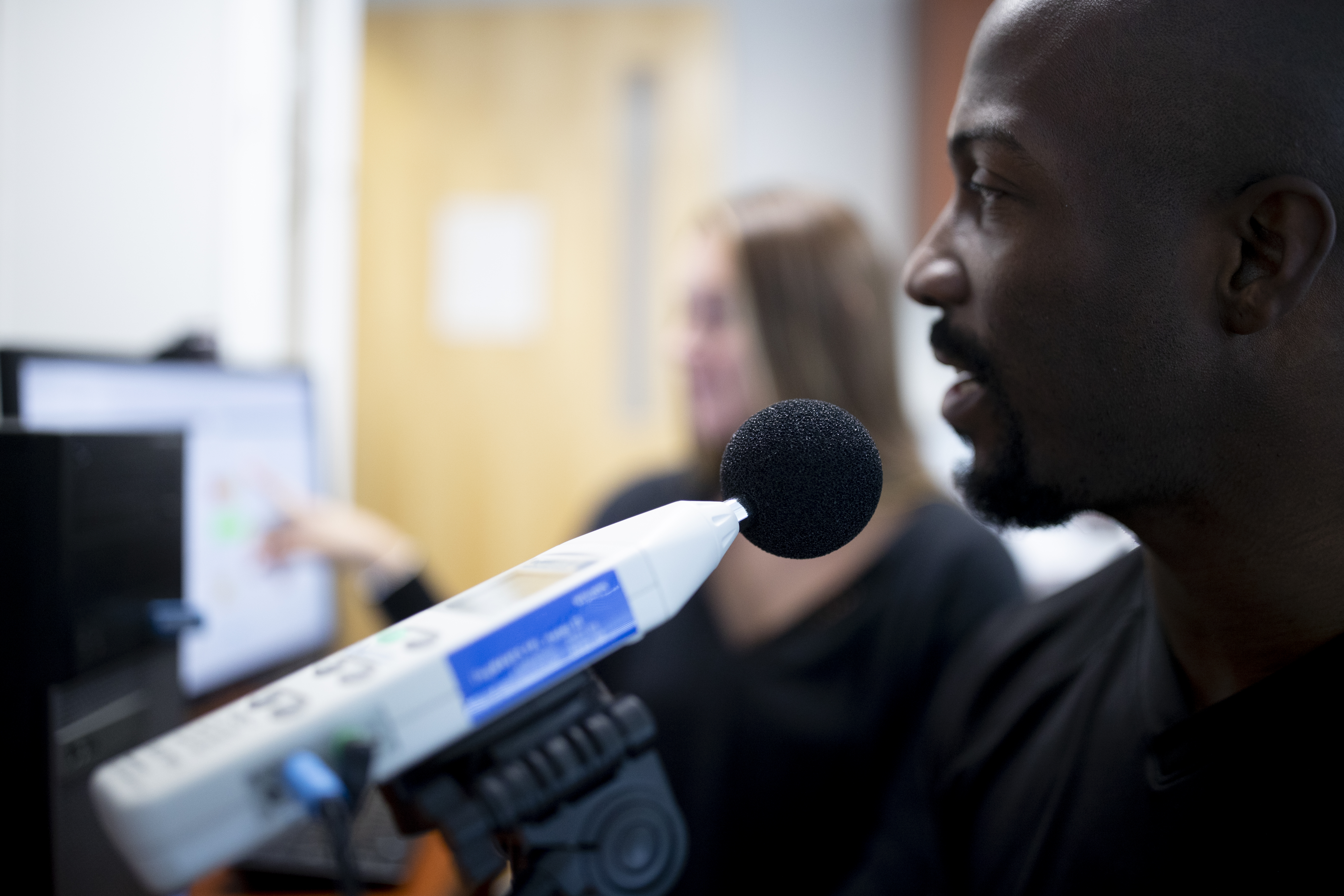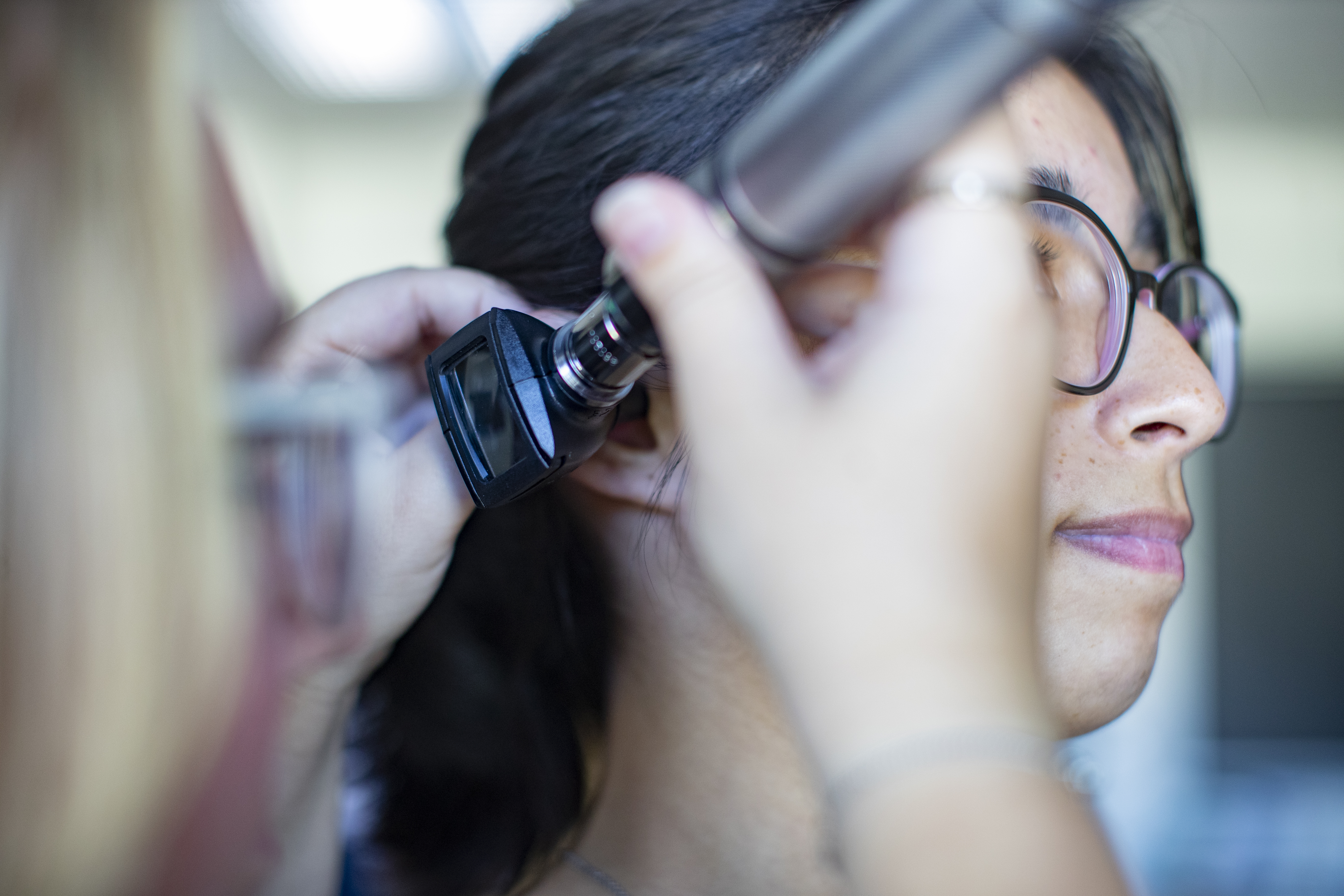Dr. Blaha: We also always advocate for face-to-face communication. Even with amplification in place, a lot of times the expectation is that the microphone sensitivity will allow you to communicate at a fair distance. Most devices will have a maximum amplification range of about eight to 10 feet. If the person communicating to you is further than that, you may notice that there's a sound, but it won't have the clarity or information until that person comes closer to you. Then you could use some visual cues to fill in for any information that you're not hearing. Hearing aids do not restore all aspects of hearing. They will make some sounds louder as long as you have hearing that can accept it. For more severe losses, we may not have enough residual hearing to function that could benefit from a hearing aid. You may not have access to all of the information and therefore, getting as close as possible for the visual supplementation is critical.

Serianni: That's why we try to pull in families too, because we don't want the burden to be completely on the patient to be constantly saying, “You need to look at me, we need to be in the same room, turn your radio down.” I think that must be exhausting for our patients. If we can get the families on board, caregivers and other practitioners that are in the world of a person that has a hearing impairment, we have an opportunity to be successful in managing the hearing loss, while maintaining a positive quality of life.
Dr. Blaha: One thing that I've noticed over the years is that manufacturers of hearing aids will include some aural rehab coaching in the manufacturer's guidebook for the products. I've seen where they talk about learning to use your devices primarily in a quiet environment so that you can begin to acclimate to what's around you. The majority of the time what we're listening to is actually a noise, and so the first step is to just get your brain used to being stimulated, hearing the sounds and practicing identifying. One of my colleagues, likes to say, ‘triangulate.’ If you hear a sound you're not familiar with, stop and listen and determine, is it something that you recognize? If not, try to figure out where it's located and maybe move closer to that sound and consider that it could be the air conditioner that you haven't heard for a while or the microwave when it's cooking.
I've had family members with hearing aids as new users that didn't realize the microwave made a noise when it cooked because the light came on and the tray started turning and that's what they assumed was the cooking process — but it makes a noise. So, getting used to, and being open to that type of practice, it's a different experience, but it shouldn't be immediately assumed to be a negative experience. It's a difference and it's a training process to get the best benefit out of hearing aids and communication enhancement. If you go into it with an open mind and are willing to practice, you could even try reading out loud to yourself so that you can get used to the way voices will sound coming through your new devices. That is a basic form of aural rehab that you can do on your own at home.
Serianni: In therapy, we look at the type of client before we decide which approach we're going to take. My research tells me there are two basic approaches to what we'll call auditory training, or as you said, getting used to the device and using it successfully. We could take a bottom-up approach, which is looking at finite units of communication and then building upon them; for example, starting at discriminating words and then building into shorter sentences into longer conversations. Starting with the smallest unit of communication and building up. Or we could take more of a top-down process, which is an approach that looks at the overall meaning of the communication and helps the communication partners fill in the gaps with those contextual cues. An example I usually give to describe the difference is in the world of sign language: we could use finger spelling, which is the word for word interpretation of the words that you want to say, spelled out with the finger alphabet, versus American Sign Language (ASL), which uses gestures to broadly describe concepts. Thinking about how you want to approach training, again, depends on the goals of the client and their family and really what we think is going to be the biggest bang for the buck.
We also use that training aspect to begin to practice what the communicator needs to understand the information and then respond to it. The old term was called lip reading. Now we call it speech reading because we don't just focus on what the mouth is doing to interpret what is being said. There's lots of information and who better than our population these days to know being post-pandemic, the masks are coming off. We now see full faces and we're understanding communication differently these days than really just looking at what we used to call 'smile eyes' because that's the part of the face we healthcare providers and people in general were focused on through the pandemic.

 Dr. Blaha: You could supplement that by asking for things to be in writing so you can review them afterward because I believe the statistic says we only remember about 25% of what is delivered auditorily, and even about half of that is incorrect information. Think about the restaurant scenario, with amplification because of the background noise. We're trying to have a conversation, but background noise is always something that will interfere. Being able to manage the background noise, but also think about how you're communicating. We hear this a lot where you just keep repeating the same thing over and over, but it might be the choice of word that you're using that’s confusing to the person. Maybe you can rephrase what you're saying. Sometimes the aural rehab is applied to the communication partner, the family member. We hear this a lot when patients say, “I'm trying to watch TV, but my wife wants to have a conversation so my attention is directed to two places.” They feel that it's unreasonable in some instances to have to mute the television or pause what they're doing because when they were younger, they were able to do both things at the same time. Auditory attention is something that doesn't stick around. It does decline with time.
Dr. Blaha: You could supplement that by asking for things to be in writing so you can review them afterward because I believe the statistic says we only remember about 25% of what is delivered auditorily, and even about half of that is incorrect information. Think about the restaurant scenario, with amplification because of the background noise. We're trying to have a conversation, but background noise is always something that will interfere. Being able to manage the background noise, but also think about how you're communicating. We hear this a lot where you just keep repeating the same thing over and over, but it might be the choice of word that you're using that’s confusing to the person. Maybe you can rephrase what you're saying. Sometimes the aural rehab is applied to the communication partner, the family member. We hear this a lot when patients say, “I'm trying to watch TV, but my wife wants to have a conversation so my attention is directed to two places.” They feel that it's unreasonable in some instances to have to mute the television or pause what they're doing because when they were younger, they were able to do both things at the same time. Auditory attention is something that doesn't stick around. It does decline with time.